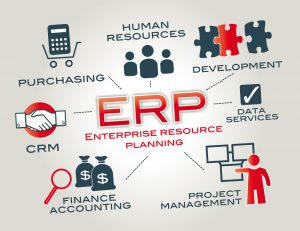Category: Enterprise Software
Most of us, technology geeks or not, are eager to stay first in line to catch up with the latest game-changing technology trends. Here we are to know which technologies will thrive in future!
The Potential Technology Trends You Need To Explore In 2025
Have you ever looked up at the sky and clapped your eyelids on a bat? This is commonplace. But what if it was a drone. Or would it be a flying fleet? Since we don’t belong to the Jetsons family, the latter is not expected but we are close to it! This year is definitely a transformative year for technological innovation!
According to Gartner, the Top 10 Strategic Technology Trends for coming years are Block chain, Artificial Intelligence, Empowered Edge, Privacy and Digital Ethics, Quantum Computing, Immersive Experiences, Augmented Analytics, Autonomous Things, and Digital Twins!
This is just the tip of the iceberg. Following are the emerging technology trends and catalyzing technical innovation that we can expect to see more of in future!!
Related Reading: Find how digital innovation is transforming today’s business world.
1. Blockchain Technology – The ‘New Internet’
Some call Blockchain technology the ‘New Internet’. The blockchain is the brainchild of a person or group of people known by the pseudonym, Satoshi Nakamoto. It permits digital information to be distributed but not duplicated.
It was first devised for the digital currency, Bitcoin. It is also called the “digital gold”. To this day, the total value of the currency is nearly $112 billion US!
“Blockchain solves the manipulation problem”, says Vitalik Buterin, inventor of Ethereum.
2. Artificial Intelligence (AI)
Apart from AI-powered chatbots, This year will witness chip manufacturers such as Intel, NVIDIA, AMD, ARM, and Qualcomm shipping specialized chips that speed up the execution of AI-enabled applications.
This year will also be the year for hyperscale infrastructure companies like Amazon, Microsoft, Google, and Facebook.
Related Reading: Check out the top AI trends
3. Cloud-independent edge computing
The study from IDC illustrates that 45 percent of the entire data created by IoT devices will be stored, processed, analyzed and acted upon close to or at the edge of a network by 2024! Edge computing is a mesh network of data centers that process and store data locally before being sent to a centralized storage center or cloud.
4. Privacy and Digital Ethics
Facebook, recently witnessed the biggest security breach in which 50 million accounts were compromised. Facebook, later clarified that data of 30 million accounts were stolen.
People are becoming more nervous about how organizations and third-parties are using their personal data.
5. Quantum Computing
The world is behind building the first fully-functional quantum computer. Also called the supercomputer, this is expected to be a cloud service rather than an on-prem service. IBM is already offering cloud-based quantum computing services. For instance, the automotive, financial, insurance, pharmaceuticals, military, and research industries have the most to gain from the advancements in Quantum Computing.
6. Immersive Experiences
Conversational platforms are changing the way in which people communicate with the digital world. Virtual reality (VR), augmented reality (AR) and mixed reality (MR) are changing their approaches to know more about people’s perception.
7. Augmented Analytics
Augmented analytics relies on augmented intelligence. This uses machine learning (ML) to transform how analytics content can be developed, consumed and shared.
“Through 2020, the number of data scientists will grow five times faster than the number of experts”, says David Cearley!
8. Autonomous Things
Autonomous things, such as robots, drones, and autonomous fleet, use Artificial Intelligence techniques to automate their functions that were previously performed by humans.
9. Digital Twins
A digital twin is a digital representation of real-world items that are interlinked. Cearley states that there can be digital twins of people, processes, and things!
A DTO is an aspect of the Digital Twin evolution that is a dynamic software model that relies on operational or other data. DTOs help drive efficiencies in business processes.
Apart from these, there are other key technology trends that organizations need to explore in future. These include:
10. Cybersecurity and Risk Management
According to the estimates from the firm Gemalto, the data breaches were 4.5 billion in the first half of 2018! The University of Maryland study found that hackers attack computers every 39 seconds.
In coming years we will be facing a more sophisticated array of physical security and cybersecurity challenges.
Cybersecurity is thus the digital glue that has held IoT, Smart Cities, and the world of converged machines, sensors, applications, and algorithms operational throughout!
11. Smart Spaces
A smart space is a physical or digital environment in which humans and technology-enabled systems interact in an increasingly open, connected, coordinated and intelligent ecosystems, according to Gartner! The world of technology is to enter accelerated delivery of smart spaces in 2019.
12. Self-powered data centers
Data centers grow every minute with the implementation of virtual servers and storage, energy-efficient buildings. In coming years, the data centers are expected to run on its own self-contained power plants!
13. IoT integration
This year will witness more IoT implementation. An International Forrester IT survey that said among a recent group study, 82% of respondents were unable to identify all of the devices connected to their networks. Of this lot, 54% were nervous about device security, and 55% were concerned about integration!
Related Reading: Find the role of Data Analytics in Internet of Things (IoT)
14. More self-service IT kiosks for business users
This year will be a year of IT innovation designed to build better communication between IT and end users. The self-service IT kiosks to be set up would enable users to log on and choose what they want for the apps that they build.
15. The Internet of Things and Smart Cities
50 billion equipment, including smartphones, and others are expected by the IoT to be wirelessly connected via a network of sensors to the internetin future.
The term “Smart City” means creating a public/private infrastructure to conduct activities that protect and secure citizens. It integrates communications (5-G), transportation, energy, water resources, waste collections, smart-building technologies, and security technologies and services!
To upgrade your business with the latest technology trends on the table, contact the experts at Fingent today! Also, read through our latest blogs to learn more about accelerated technological development!!
Stay up to date on what's new

Featured Blogs
Stay up to date on
what's new



Talk To Our Experts
Also known as Intelligent Automation, Robotic Process Automation leads to business success with the robots being able to perform complex tasks. Recent researches have shown that robotic process automation can help in successfully carrying out 87.5 percent of the tasks on time on its own!
According to Forrester Research, 2018, “CIOs should use robotic process automation to digitize and optimize operations, to create and act upon advanced insights, and to drive business technology innovation.”
Institute for Robotic Process Automation and Artificial Intelligence, define RPA as an application of technology that aims to automate repetitive business processes. RPA tools help a company to configure software—a “robot,” so to speak—in order to capture and interpret applications for processing transactions, manipulating data, triggering responses, and communicating with other digital systems.
Everything you need to know about using Robotic Process Automation For Your Business Growth: Tips and Tricks!
Over the next three decades, statistics show that over 76 million baby boomers, rather freshers will retire and only 46 million new workers will be available to replace them! During this time, the demand for labor will rise, making robotic automation a real and viable solution! But this does not indicate that Robotic Process Automation means career extinction!!
Robotic Process Automation – Important Insights and Forecasts!
North America bagged the highest in 2017 for using RPA and the trend is expected to continue over the forecast period. The reason is the increased penetration of automation and process management solutions across the region. The fastest-growing region is expected to be the Asia Pacific. It was valued at USD 45.9 Million in 2017. Automation, which includes machine learning, robots, and AI are the strong sectors for market growth in the Asia Pacific region.
Let’s walk through the major ways in which Robotic Process Automation drives business growth:
Cost Savings By Making Work Robo-Automated!
Implementing Robotic Automation in your business enables 24/7/365 operational functionality at the cost fraction of an individual! Through work process automation, administrative costs are reduced immediately and no additional back-office resources are required. Implementing RPA requires an initial financial investment, but it increases the overall efficiency and productivity. It ensures the reduction of errors as well.
Advanced Analytics Prove Business Process Optimization
Data is King! Recent studies have shown that the use of automation ensures 100% compliance of data-driven regulatory standards (HIPPA, PCI, etc.). Integrating technology within any enterprise infrastructure function enhances the ability to predict future results and optimize business processes.
Through the use of Robotic Process Automation, operational processes can be assessed based on the performance data of your business. By creating a constant data-driven feedback loop, higher levels of efficiency can be measured. This cannot be achieved with human operation.
Improved Performance, Efficiency, Quality and Reliability
Robotic tasks and workflows are efficient and ensure 100% accuracy and availability. Automation eliminates repetitive functions.
RPA helps employees to apply their skills and experience toward core business objectives. This is made possible with automation as repetitive mundane tasks can that drive innovation and growth.
Protection from Injurious Tasks
Also termed Musculoskeletal Disorders (MSDs), Repetitive Strain Injury occurs from performing the repetitive tasks at high speeds. This results in swelling and cramping. When performed continuously at high intensity for a longer duration, it results in a chronic disorder!
According to the statistics, in 2012, the manufacturing industry had the fourth highest number of MSDs, with 37.4 incidents per 10,000 workers. In such cases, robots are the best suited for completing repetitive tasks, thus saving employees from dangerous work disorders!
Automation Workflow Independence With RPA Integration: Correct Those Brittle Workflows
What can be more charming than the freedom to integrate with any available technology? A prime advantage of RPA integration is it does not require Information Technology (IT) resources.
When funding for large IT projects is a bottleneck for corporations because of its need for programmatic integration with enterprise-wide systems and applications, it forms a major IT development barrier.
For instance, consider the success of Software as a Service (SAAS) solutions such as Salesforce, Zendesk, GoToMeeting, Slack, Workday and so on. These have witnessed tremendous success by their ability to be deployed with very limited technology backbone. Similarly, Robotic Process Automation bypasses the IT sector through its “View Layer” integration approach. The centralized engine it has is trained to communicate and operate with existing applications at the desktop level and not the back office. Thus robotic process automation rules and workflows can be defined by anyone!!
Surface Automation and Document Processing With RPA: Need to Handle Brittle Workflows
RPA is useful when you need to automate the process of adding data to or manipulating data within one of those systems. This is called Surface Automation. RPA provides an effective solution for accessing and working with data housed in those systems.
Additionally, RPA tools are used by businesses for Document Processing. These RPA tools can open a file, parse its contents, and move files.
The concern is since RPA engages with systems on a surface level, the workflows built with RPA are brittle. For instance, If a document’s format changes, the RPA process must change accordingly. So now there is a need to streamline these brittle workflows.
The Future Is Now With Robotic Process Automation!!
The Robotic Process Automation (RPA) market size was valued at USD 357.5 Million in 2017 globally. This value is expected to reach a CAGR of 31.1% over the forecast period.
The ever-mounting demand for Business Process Automation (BPA) through the use of Artificial Intelligence (AI) and software robots are featured to be the key growth-driving factor for the market.
Integrating RPA in the core business enables a business to streamline IT and business operations.
Also, its ability to mimic the numerous skills of humans, without human intervention while consistently carrying out prescribed functions and scaling up or down to meet the demand is expected to augment the market demand!!
Robotic Process Automation will play a significant role in the automation of Customer Experience and be a key factor in your business in the near future! Consult our experts at Fingent to know how Robotic Process Automation can bring incredible changes to your business.
Related Reading: CTOs Guide – How Robotics and AI Can Improve Customer Experience
Stay up to date on what's new

Featured Blogs
Stay up to date on
what's new



Talk To Our Experts
In this era of rapid digital transformation, new technologies have opened up opportunities and created challenges, fundamentally transforming customer experiences, operating models and the work environment.
While the scope, scale, and complexity of business technology has evolved at an exponential rate, sophisticated technology has also become more accessible to a wider audience. Such accessibility enables a thriving digital culture which can be a source of competitive advantages across all business functions – recruiting, training, sales, sourcing, manufacturing, logistics, marketing and more. While in the past, technology providers (like us at Fingent) predominantly worked with IT departments, today we often work with functions like finance, sourcing, HR, project management and logistics, with minimal or no involvement of the customer’s IT team.
More importantly, access to robust technology is also no longer exclusive to large enterprises. Commoditization, outsourcing, and good connectivity have driven down costs, making technology accessible to businesses of all sizes, across the globe.
By providing an attractive basis for innovation, improving cost efficiency and differentiation, the synergy between technology and business processes is no longer optional, but a must-have.
Studies reveal that 55% of startups have already adopted a digital business strategy compared to 38% of traditional enterprises.
While the specific technologies that can be leveraged for business growth, will vary widely across organizations, there are a few common themes that business leaders can consider.
The Cloud democratizes Information Technology
Cloud computing is really the internet as we use it today. Dropbox, One Drive, Facebook, INFINCE, AirBnB, Twitter, Uber…. Are all in the cloud. It is really an umbrella term that covers a variety of on-demand computing and storage services as IaaS (Infrastructure as a Service), PaaS (Platform as a Service) or SaaS (Software as a Service).
Related Reading: Choose the right Cloud service model for your Business
Cloud technologies help discard or avoid the need for physical IT infrastructure, and on-premise support structures for computing capabilities, by virtualizing these across server farms or data centers. Using cloud-based services providers, businesses can leverage IT assets as programmable resources, which are global and scalable on demand. This allows a business to access or lease computing resources and storage power far greater than what it may have been able to access on local infrastructure, while still being able to scale up or down in a cost-efficient manner.
Consider V Locker, an Australian firm providing automated locker solutions for freight deliveries. V Locker manages lockers for B2B customers across the globe from Australia, using IaaS (Infrastructure as a Service) and PaaS (Platform as a Service).
On the cloud, multi-tenancy enables effective resource utilization, reducing costs to make the cloud a cost-efficient option for most organizations. For e.g. SaaS (Software as a Service) Property Management service Simple Rent uses multi-tenancy to provide a low-cost, high quality offering to the commercial and residential rental business.
While the Enterprise IT spend on the cloud is relatively small, it is the fastest growing segment, slowly replacing on-premise systems. At one end of the spectrum, Oracle and Microsoft are slowly shifting legacy products to the cloud, pushing many large enterprises to follow suite. At the other end, solutions like Infince have taken enterprise cloud a step ahead by blending SaaS and IaaS for small/medium sized businesses, providing a cost-efficient, secure cloud-based alternative to expensive alternatives. The cloud makes robust enterprise technology accessible globally to businesses of all sizes without the need to invest in expensive infrastructure or large teams.
Data – Big, Small and everything in between
With the relentless digitization of business and society, we have access to extraordinarily large amounts of data. Transactional data (from digitized business processes via ERP, CRM, HRMS, POS, and similar systems), Social data (Facebook, LinkedIn, YouTube, Twitter and the like) and Operational data (from connected devices and IoT systems) can be leveraged to provide better customer experiences and improve operational efficiency. The key is not just to gather data, but to leverage it with analysis and insight. From an organizational perspective, this can require experts from multiple disciplines to work together to peel back multiple layers of data and insight.
Related Reading: Find out how Big Data is changing the Healthcare sector.
Success depends not on the indiscriminate application of technology to data, but on a coherent approach, of identifying critical data that matter, and using the right technology to generate relevant and actionable insights, delivered to key stakeholders in the value chain, in real time.
In the realm of marketing, successful big data analytics manifest as tracking everything a customer or prospect does and generating real-time alerts to the marketer or a front line executive dealing with the customer. For instance, if the customer walks into a store, the automated analytic solution alerts the sales executive immediately, and everything related to the customer, including their preferences, purchase history, and more, surfaces to the executive’s tablet. Likewise, if a prospects click on an ad or downloads an app, the marketer gets an alert immediately, enabling them to engage the customer proactively, to close the deal or move the prospect up the lifecycle.
From Digitization to Digitalization to Digital Transformation
Digitization is the conversion of analog physical objects into digital goods. Paper to PDF or Doc, or physical cash digitized to mobile payments, physical signatures to electronic signatures – these are all digital manifestations of non-digital objects. Digital goods have low marginal costs, are non rival, and can easily be bundled with other digital or non-digital products. Consider online user manuals, learning management systems. Usually the first step in an organization’s technology journey, Digitization sets the foundation to enable Digitalization and Digital Transformation.
“Digitization and digitalization are two conceptual terms that are closely associated and often used interchangeably in a broad range of literature. There is analytical value in explicitly making a clear distinction between these two terms.” – Scott Brennen and Daniel Kreiss
Digitalization is about leveraging technology to create, enable or transform a business process- usually leading to one or more of- the discovery or new opportunities, reduced risks or efficiency gains. For example, field service management solutions like ReachOutSuite help deploy digital forms to field technicians across various locations. It reduces the risks of revenue loss due to errors, inefficient scheduling and underprepared staff. This service also increases efficiency by maximizing staff utilization and getting more jobs done pre-staff. It further enables the identification of new opportunities by enabling techs and backend admins to understand customer experience better. Digitalization of business processes is par for the course these days with a plethora of packaged and custom built software available for enterprise planning, managing business finances, training, projects, customer management, and human resources.
Find how ReachOutSuite can make a work order manager’s life simpler.
- CRM systems coordinate business processes that are key to generating leads, converting them into prospects, and, subsequently, into regular customers. Additionally, CRM software solutions supply business managers with data processing and analytic tools to help refine marketing strategies, improve customer service and track overall organizational performance. Through centralization of business data, CRM software tools streamline the decision-making process and automate repetitive tasks.
- Project management software eliminates laborious paperwork and tedious planning processes. With the right tools, businesses can control projects costs and improve the efficiency of related operations. Technology automates most project management processes to make it affordable and practical for any type of business. The main benefits of implementing project management software include – Easier project planning, monitoring and tracking, Improved collaboration, Better organization, and future planning
- ERP systems boost productivity and promote business growth in two primary ways. First is automating business processes to improve accuracy and save time for all employees. Second, ERP systems unify data generated by the business and make it available to decision-makers and other managerial parties throughout th
e firm. It eliminates data sharing problems among departments and makes the information accessible to everyone.
Digital transformation is about leveraging digitization and digitalization to transform a business unit’s or an organization’s approach to business. This can involve one or more of – new business models, overhauling customer experience, radically different manner of service or product delivery. The transformation is driven by the business, and not by the IT team. For instance, consider Replika, which connects brick and mortar sales to the digital realm, transforming the way sales is managed for retail. Emerging technologies will create new business models that may be hard to understand or foresee today. For instance, digital securities based on blockchain based technologies can unbundle ownership of analog assets like property or gems, while making it possible to bundle diverse asset classes to create new portfolios for investment. Such digitization of previously illiquid assets creates new customers, new strategies and new business models that may not be possible to fully comprehend today.
Related Reading: Find out how INFINCE is the ultimate digital transformation for small business of today.
In conclusion
Technology is a disruptive force. In the current ever-changing and multifaceted business environment, technology can not only help improve your businesses’ agility but can also provide cost-effective means to innovate your products and services, improving customer experience. The key is to adopt the right tools and partners, while actively planning the change and deployment.
Stay up to date on what's new

Featured Blogs
Stay up to date on
what's new



Talk To Our Experts
iOS 12 is now live and represents the latest evolution of Apple over its decade long existence. Today, Apple’s App Store has over two million apps with over 170 billion downloads and over $130 billion in revenue. With iOS 12, developers are poised to offer a far superior experience for users compared to previous versions.
Here are the top iOS 12 application development features that enterprises can benefit.
Siri Shortcuts Take User Experience to a New Level
Adoption of Siri is increasing at an exponential pace, considering the popularity of using voice technology for commands and simplifying user actions. True to form, iOS 12 makes Apple’s personal assistant more proactive, by allowing shortcuts.
Siri Shortcuts minimize the number of steps users take to accomplish everyday tasks. Siri intelligently pairs users’ daily routines with app functionality and suggests convenient shortcuts whenever available. Such shortcuts allow users to access the offered functionality or complete the task on hand from the lock screen or from search, without having to open the app.
Siri learns and predicts shortcuts through “donations.” Developers and users may “donate” shortcuts to Siri. Developers may use the Shortcuts API to donate the shortcuts they wish to offer their users. The prerequisite towards “donations” that meet the objectives is developers having an accurate understanding of the specific in-app actions that drive the most engagement, to make the relevant Siri Shortcut donations for the most frequently used features.
The flip side to making donations for shortcuts is handling user expectations. Users may, for instance, expect the app to have shortcuts for features where shortcuts are not technically possible. For instance, when the app requires user authentication before completing an action, such a feature cannot run in the background, as a shortcut.
Improved Core ML 2 Brings Machine Learning to Apps Easily
Core ML is a relatively new toolkit, but very critical, considering it now powers Siri, Quick Type, and Camera functions in iOS. Core ML allow developers to integrate machine learning models including text, barcode, face, and landmark detection, object tracking, enhanced image recognition, and other intuitive functionality into apps, easily. Core ML 2 comes with over 30 layer types and supports expansive deep learning capabilities. Developers may run on-device machine learning models without the need to analyze data across multiple servers.
iOS 12 makes it easy, simple and fast to integrate Core ML 2 with user-facing apps. Developers can leverage this handy toolkit to embed machine learning frameworks and models directly into mobile apps, with just a few lines of code, and with no extensive technical expertise required.
A New CreateML Framework Allow Lay Users to Create Machine Learning Models
Create ML, a new framework, allow developers to build machine learning models, with little to no machine learning expertise. Its similarity with Swift makes the framework familiar and comfortable to use. Create ML is also integrated into Xcode 10 playgrounds, making it easy to view model workflows in real time.
Developers can leverage the embedded natural language capabilities of iOS 12 to create in-depth models for advanced purposes such as regression, image classification, word tagging, and sentence classification, with just a few lines of Swift code.
Highly Intuitive ArKIT2 Toolkit Takes AR Experiences to a New Level
The improved ArKit 2 toolkit allows developers to create powerful and hugely incredible Artificial Reality (AR) immersive experiences. The toolkit enables developers to create engaging multiplayer games, presentations and more, allowing multiple users to view or play the AR enhanced simulations simultaneously. The ingenuity of the toolkit enables developers to offer users the option to save the AR experience and resume it at a later time, co-opt real-world objects into the AR experiences, and much more.
Interactive Push Notifications
iOS 12 changes the way users receive push notifications. Users now gain considerable control over the type of push notifications they choose to receive and how they receive such notification. Users gain access to message settings directly from the push notification interface, allowing them to opt-out of messages from the device’s lock screen. The enhanced downtime settings enable users to ignore push notifications entirely.
Such new functionality, however, creates a new challenge for developers. It is no longer enough to somehow coax the user to download the app. The obvious requirement to remain in the user’s scheme of thing is to provide better and highly personalized, stand-out content in the push notification. Developers can also add buttons and switches to the push notifications, to encourage user action, infusing interactivity to push notifications. Developers can also customize the font, image, and other elements of the push notification.
End of Password Annoyance with iOS 12 Application Development
iOS 12 offer developers access to Password Autofill. Users may leverage this new feature to create and save passwords, and then log in to incumbent accounts, with just a few taps, regardless of the device. The password autofill functionality saves the user’s password on the device, and users can now share the data across devices using the iCloud keychain.
The new password autofill option significantly improves the user’s onboarding process, offering the path of least resistance. Empirical evidence suggests complicated registration fields harm user acquisition efforts and increase user abandonment. Also, contrary to the first impression, the autofill option actually increases app security. Autofill suggests strong, unique passwords at the onset.
While features and options are aplenty in the new iOS 12, the key to successful app development is picking and choosing the right features, relevant for the project. A tie-up with competent professionals with a history of having developed successful apps helps.
Related Reading: How to Empower your Business with an iOS Application
Stay up to date on what's new

Featured Blogs
Stay up to date on
what's new



Talk To Our Experts
As we enter 19 years into the millennium, we find that Java has been running on 10 billion devices. The world is yet to witness innovative and user-friendly Java trends that will have a profound effect on application development in the year 2024!!
From peer-to-peer, open source and embedded to wireless and Juxtapose applications, Java has been the most popular programming language in the world of application development, with the highest rating of 16.746 percent, according to the Tiobe index!
A Retrospective Of Java Trends
Java so far has given a step-up to many of the light-weight programming platforms, as for Eclipse, Java Development Kit (JDK), the Oracle JDeveloper, as well as the Eclipse and other Open Source Applications. Let us take a look at the Java trends that made a breakthrough in application development.
-
Emergence Of EE4J and MicroProfile Projects
The Eclipse Foundation has emerged with pride with the introduction of projects like EE4J and MicroProfile.
MicroProfile has provided insight into how a more open Java EE community could flourish. Both Java EE and Spring technologies benefited out of this rise, by bringing accelerated innovation.
-
Emergence Of Kotlin
Kotlin, the JVM-compatible programming language has caught the strong attention of the Java/ Android community. Its concise coding syntax and interoperability with Java have already made it a hit in the world of application development. Kotlin is first-class support for Android and is expected to additionally improve its use for mobile application development in future!
-
Java SE 6 Updates And The OpenJDK 10 Release
2018 also witnessed the updates of Java SE 6. These updates, however, are not publicly available as yet! The code restores are only available through the Java SE Support program and in Solaris 10’s Recommended Patchset Cluster and were mainly a couple of security fixes. OpenJDK 10 was released on 20 March 2018, with the adoption of certain new features.
-
Ensuring Seamless Configuration Of Applications With Containers And Java Runtimes
The Collection framework has managed to leverage more benefits of the use of containers and Java runtimes. This offers a seamless configuration of Java applications and consistent memory management.
-
Frequent Alteration To Features – To Ensure A Well-Planned Application Development
Yet another major development was the introduction of a ‘six-month release’ interval.
This ensured frequent iterations and faster introduction of features to Java applications. These characteristics were decided to be made available through enterprising shops.
Technology Trends in Java – What To Expect In 2024
Java is a programing language that can run on nearly any system (Thanks to the platform-agnostic JVM!), it has started to get easier to use and scalable than ever before! Below are listed the major trends that we could predict for this and coming years.
-
Java Continues To Evolve – Java SE 10 Contribution
Java is a programming language that is used by more than 9 million developers. It contains extensive libraries that shape the whole enterprise application development. With the release of Java SE 10, which was created in close collaboration with the OpenJDK Community, came several new added features. Java is also ranked as the #1 developer choice for cloud, with over 12 million developers and over 21 billion cloud-connected Java virtual machines!!
-
Real-time Specification
The Real-time Specification for Java (RTSJ) is into existence.
Java creator, James Gosling, and Sun’s real-time guru, Greg Bollella have described embedded systems as “the new frontier in which predictable execution takes precedence” over other system attributes, such as speed, bandwidth, and payload-carrying capacity. They are promoting real-time Java applications for embedded use! With the RTSJ, they have managed to solve the language and runtime issues.
-
Project Juxtapose
Sun’s JXTA open source platform has gained ample acceptance among developers.
Using Project Juxtapose, Sun hopes to influence standards that will govern future Web services development. With this, Java developers will be able to focus their capability to contribute more for Java application development.
-
The Java Effect On Scripting Languages
Scripting languages such as Jython, which is a complete implementation of the Python language, is coded in cent percent Java. Python, Perl, and PHP to name a few other programming languages are receiving widespread attention.
-
Wireless Applications With Its Ease Of Use
Wireless application development in Java has gained noticeable traffic due to its open-source platform nature. The reason being Nokia, the world’s largest mobile telephone maker, has committed to using the open source Symbian OS for all of its future handsets!!
Both kinds of Wireless Java applications, Local and Network applications, is more challenging because they are developed on one platform (such as Solaris or MS Windows) but deployed on a totally different one (such as a cell phone or PDA). It is a concern that, while emulators enable developers to do some of their testings on the development platform, they need to test and evaluate the application in a totally different environment of a live wireless network. This is however made easy!!
-
Growing demand for Java developers
Java being a statically-typed language, it is faster and easier to maintain with fewer bugs. It is also backward compatible, which means old versions of the language will still run perfectly even after new versions are released. This is a big relief for businesses who would otherwise worry about rewriting their code every time a new version comes out. Coupled with its portability, developers know that investing in Java will pay dividends for a long, long time.
-
Mobile Application Development
In less than two years, the demand for mobile enterprise applications is estimated to rise five times faster!! Android currently dominates the smartphone market with 80.7% (compared to Apple’s 17.7%) and will continue its expansion! Java will, as a result, continue to be the driving force behind mobile application development trends!
-
The IoT Era And Java
The Internet Of Things is among the latest development trends in Java! As of now, Java is currently one of the few technologies that are capable of adding life to IoT. It is indeed true that Java’s future lies in the Internet of Things.
Mike Milincovich, Eclipse Foundation strongly believes that Oracle will help to develop a definite end-to-end storage data solution!! Like the Kona Project that is currently working on Java APIs for embedded systems.
The Java ME platform allows vendors to build secure mobile enterprise applications for the Internet of Things. The language is supported by the Intel IoT platform!
With all these advanced features and development, Java continues to grow and evolve. Java has undeniably achieved the top spot among the most popular programming languages in the world!
Stay up to date on what's new

Featured Blogs
Stay up to date on
what's new



Talk To Our Experts
AngularJS has come a long way since Google launched it in 2009. Today, it is one of the most widely used JavaScript frameworks. Here are some of the good reasons which make the framework so popular and powerful.
1. AngularJS Modular Architecture Makes the Framework Very Powerful
AngularJS has a Model View Controller (MVC) architecture, which is best suited to create dynamic web applications with rich content. The framework divides logic, process, and UI into separate modules, making development easy, simple, and faultless, while also improving code quality in a big way.
The modular architecture improves app architecture, and enhances flexibility and functionality, without compromising stability. It facilitates developers to create powerful workflows and achieve powerful results with little effort.
Developers working on a modular framework to create fully-responsive single page apps need to perform very few manipulations on JS and HTML, to achieve different results. It requires very few changes to ensure the page renders differently on various devices and platforms Also, making changes means rearranging the modules rather than tweaking with the code itself, delivering better stability. Developers may also segment code parts, simplifying testing, updates, and maintenance activities as well.
2. AngularJS is Resource Rich
AngularJS is built on JavaScript and comes as a complete package, removing the complexity traditionally associated with JavaScript development. It offers everything the developer requires to get the app up and running. It is also very easy to co-opt third party libraries and packages, facilitating the presentation of data in a very appealing way.
The multiple templates, modules, and UI effects on offer, improve the all-important user experience considerably. AngularJS also offers several readymade versatile solutions, such as, UI routing approaches, which make the task of customization very easy.
Developers may extend the HTML templates by adding constructs to expand the HTML functionality, facilitating an advanced approach to manage components. In fact, it is possible to extend the HTML vocabulary by implementing features even during runtime
3. AngularJS Leverages the Power of Simplicity
AngularJS makes the development of dynamic web apps simple and easy.
It is possible to add AngularJS to an HTML page easily, using a simple coding script. App developers also need not add all the libraries when writing the code. They can add libraries later, making modifications and customizations very easy. The improved and declarative user interface allows developers to create eye-catchy user-experience across the app.
A normal application consists of more than 60 components, and the project soon turns messy. AngularJS makes it easy to manage and locate the codes for the developers.
The AngularJS code is easy to understand and easy to maintain as well. The ease and simplicity not only make development quicker, but it also means the client need not be tied to a developer who happened to develop the code initially. They can pick and choose any developer as required, depending on the specific nature of the problems they encounter midway.
4. AngularJS Facilitates Accelerated Development
Today’s developers are invariably hard-pressed for time. AngularJS is a godsend in the sense it offers a powerful tool to get the job done very quickly. The modular capabilities of AngularJS facilitate parallel development, reduce dependencies on other modules, and thereby accelerate the critical time-to-market.
The modular structure of AngularJS facilitates code reuse. Each created module remains either independent or dependent on each other, as per the developer preference, facilitating code reuse. Developers may co-opt their previously build components in a new application, sparing considerable rework. A simple copy-paste of an existing component into a new one will make all assets available automagically.
AngularJS also allows changing the behavior of the HTML tags, to create customizable and reusable tags. This not only makes the code more readable and quicker to create but also helps in developing a glitch-free web app
AngularJS also comes with real-time and in-built modules to support in-depth and functional testing for every constructed module. The modular structure means the segments and modules requiring testing may be processed distinctly, while the rest remains untouched.
5. AngularJS Taps into the Power of the Crowd
Popularity brings in its own benefits. It has ensured for AngularJS an active and vibrant community of developers, always ready to solve even the most advanced of concerns. Developers may easily tap into the power of the crowd to figure out the appropriate solution to fix pressing issues.
AngularJS is today the most popular framework to develop on-demand video streaming apps, apps with loads of dynamic features such as travel apps, weather update apps which require interactive display and real-time activities, interactive apps for user reviews and other purposes, apps with a lot of user-generated data, apps processing huge data loads, and more. Some of the most popular interactive apps on the internet, such as LinkedIn, YouTube, Upwork.com, and others, are developed using AngularJS. Yet, the framework actually draws its strength from a very large number of small-scale developers, who find it ideally suited to their requirements.
Stay up to date on what's new

Featured Blogs
Stay up to date on
what's new



Talk To Our Experts
Artificial Intelligence is revolutionizing our lives. What used to conjure up images of robots taking over the world, is now a household word. Recommendation engines are reading our minds, virtual assistants are listening to our voices, and AI insights are transforming our businesses. AI is definitely here, and this blog will show you how.
Artificial Intelligence and Its Impact on Today’s World
Artificial Intelligence in its basic sense is defined as intelligence demonstrated by machines. In application, we can say that Artificial Intelligence is the ability of a machine to assimilate information and use it to make intelligent decisions. The attributes of problem-solving, decision making and other cognitive abilities that are associated with humans becomes artificial intelligence when applied to a machine.
The lifeblood of AI is data and its pulse run by an algorithm. Algorithms assimilate data and make sense of it through analysis. The resulting insight is what drives the decision making and problem-solving capabilities of Artificial Intelligence. Learning is by far the greatest attribute of Artificial Intelligence. The ability to learn and emulate human thinking and behavior is what makes AI nearly unstoppable. Its application in business is unmatched and is predicted to offer $15.7 trillion to the global economy by 2030!
Read more: AI Implementation For Businesses
Advanced Benefits of AI
The benefits of AI extend to much more than recommendation engines and chatbots. The ability of AI to make sense of data collected through the Internet of Things (IoT) will be a game changer in every aspect of our lives. Gartner predicts that 20.4 billion “things” will be connected by 2020. Artificial Intelligence can analyze the data collected by IoT technology and enable it in ways that we cannot even imagine.
A classic example of this is Idemandu, one of the most talked about topic in the AI world since the 2018 Consumer Electronics Show. In the words of its founder Pooya Abka, Idemandu is the first AI agent “that can understand customers’ service needs over voice, connect them to vetted service providers instantly, and learn about their personal preferences with time.”
Demonstrating what is possible with Idemandu, a Forbes article quotes this conversation:
You: “Hey Idemandu, could you ask my massage therapist to come to my place tonight preferably after 8? I’m feeling an annoying pain in my neck.”
Idemandu: “Sure, but your therapist is not available tonight. I found another very similar therapist who is available, would you like to see him at 8 pm tonight? If not, I can book your own therapist for tomorrow at 8:30 pm.”
You: “Okay, tell him to come tonight.”
Idemandu: “Okay, he’ll be there. I already briefed him about your pain.”
Imagine the possibilities with such an AI empowered assistant in every home and business. Google Duplex is another technology that is focused on helping us make hotel reservations. The Assistant will call your chosen restaurant, converse with the concierge, make a reservation for you, confirm with you if the reservation was successful or recommend another restaurant if it wasn’t!
The ability of AI and robotics to use concepts like AI-Augmented Contextual Analytics and Sentiment Analysis to better predict and direct customer experience was brought out in one of our recent blogs. You can read it here: https://www.fingent.com/blog/how-robotics-and-ai-can-improve-customer-experience-ctos-guide
How AI Is Transforming Various Business Sectors
The biggest impact of AI in business development. A survey conducted at the EmTech Digital conference revealed that respondents saw AI affecting these top three business outcomes:
- improve and/or develop new products and services
- achieve cost efficiencies and streamline business operations
- accelerate decision-making
We can see this impact in nearly every sector in business. Here are three sectors where the impact of AI has been seen the most:
Healthcare
86% of healthcare provider organizations, life science companies, and health technology vendors are using AI technology, says a 2016 report from CB Insights. These organizations are projected to spend an average of $54 million on AI projects by 2020. Few areas where AI is being used in healthcare are:
1) Data management – Medical records and other patient data can be accurately analyzed, stored and used to provide healthcare businesses with the right information at the right time. Time-intensive report analyses can be automated, diagnosis can be fast-tracked, and treatment can be better administered.
2) Virtual Consultation and Care – Healthcare apps using AI allow doctors, patients and, caregivers to communicate and coordinate effectively. Speech recognition, machine perception, and other AI enabled technologies, help to monitor the patient’s condition and administer effective treatment.
3) Precision Medicine and Drug Discovery – By screening complex compounds and existing medicines for specific attributes, drug candidates for pre-clinical drug discovery and development can be rapidly identified. AI can also help detect diseases and predict hereditary health issues more accurately and help design precision medicines for specific genetic make-ups.
For more applications of AI in the healthcare industry: https://www.fingent.com/blog/5-ways-big-data-is-changing-the-healthcare-industry
Finance
The assimilation and analysis of financial data is where AI shows its true potential, but there is much more that AI can do in the financial sector. AI in the Finance industry reduces costs, saves time and improves accuracy and efficiency in all areas of Finance. Here are a few applications:
- Security from Fraud – Security is the number one concern in the financial sector. AI helps in this by simulating fraud and cybercrime scenarios and coming up with preemptive security measures to combat security breaches. AI also helps in monitoring whether all security measures and regulations are being followed in the design of financial technology.
- Wealth Management – AI engines help analyze data associated with wealth management and provide insights on how to provide optimal benefits to clients. Creating personalized and tax-optimized investment offerings for clients becomes much simpler and accurate with the help of AI. AI also helps mitigate the unpredictability of the stock market, by incorporating features like blockchains and distributed ledgers.
- Digital Assistants – AI now assists with banking transactions and finance in nearly every household. AI assistants like Alexa, Siri and others are used to make financial transactions. Voice assisted banking is being made possible with banks like Barclays coming up with technology to enable money transfer through voice assistance software.
Read more about how predictive algorithms and AI will rule financial services: https://www.fingent.com/blog/how-predictive-algorithms-and-ai-will-rule-financial-services
Transportation
AI is being used widely in the transportation sector and these are a few areas where it is making an impact:
- Automation – While driverless cars are what comes to mind when we talk about AI and automation, the role of AI in automobile manufacturing is of equal import. Tesla’s automated manufacturing systems in its factories is an excellent example of the capabilities of AI in automobile manufacturing.
- Cloud based conveniences – With the help of AI and cloud computing, automobiles are being packed with features like suggestions for gas stations when the fuel is low, favorite restaurants on the route and shopping reminders when approaching stores.
- Intelligent Maintenance – Features like predictive maintenance, repair scheduling, and even sensors to detect medical emergencies for drivers can be enabled with AI.
Read more about how connected transportation will disrupt the world: https://www.fingent.com/blog/how-connected-transportation-will-disrupt-the-world
Keeping up with AI
As you can see, the implications for AI in business is tremendous. It is important that businesses capitalize on AI-based technologies to keep up with the competition. Fingent has helped businesses from every sector to implement AI and drive revenue. Drop us a message if you have any questions!
Stay up to date on what's new

Featured Blogs
Stay up to date on
what's new



Talk To Our Experts
Custom Software Development Vs Packaged Software – Tips to select the right solution for your business
Custom software and off-the-shelf solutions come with their own pros and cons. Organizations should assess their requirements closely and opt for one that suits their workflows and processes.
In this video, Dileep Jacob, Head of Operations at Fingent shares his insights on helping businesses choose between off-the-shelf and custom software offerings. He elucidates on how custom software and off-the-shelf solutions bring efficiency improvements within an organization. The benefits and limitations of the two platforms are dealt with to help pick the best choice for your business.
Conclusion
Businesses find it difficult to choose between off-the-shelf or custom software solutions. This video presents a clear picture of the key differences between the two together with their pros and cons to help businesses like yours pick the right choice. Fingent’s decade-long expertise in custom software development can assist you to make an informed decision by piecing together the best solution and guide in your decision making.
Questions? Comments? Concerns? Contact us today to learn more about how we can help drive your business success with custom software solutions. We will quickly get back to you with the information you need.
Stay up to date on what's new

Featured Blogs
Stay up to date on
what's new



Talk To Our Experts

As a part of the exhibition, Stephen Cummings, the Senior Vice President at Fingent, took to the stage to deliver a session on running profitable small businesses in the age of digital technologies. He elaborated on how small-scale businesses can be empowered with technology to become competitive and highly productive to thrive in today’s market.
“Every company today, one way or another, depends on information. Successful companies are resilient and adopt the right mix of technology and processes as their appetite for information technology grows. We’ll present ways a small business can take advantage of recent advances in technology to compete more effectively, even against much larger companies.”
– Stephen Cummings, SVP, Fingent
Small Businesses and Technology
Technology should remain accessible to businesses of all kinds, whether big or small. Stephen highlighted on this very aspect in his 45-minute presentation. Technology comes with its own jargons that prevent smaller businesses from taking advantage. However, the onus is on bringing technology to businesses with smaller investments and workforce, so that they can thrive competitively.
There is a perceivable gap in adopting technology among small businesses. He attributes it to the increasing costs and lack of adequate tech support, Besides, on-premise IT infrastructure was dissuaded in favor of alternatives like the cloud, where small companies can get computing resources at reasonable costs. This is where Stephen put forth INFINCE, Fingent’s own enterprise cloud platform to the spotlight.
About INFINCE
INFINCE is cloud technology optimized for small businesses and a platform to run IT without any hassles. Stephen highlighted on some of the key traits of INFINCE that makes it different from other cloud platforms. Quick deployment is one such, where a company can set up and run INFINCE within minutes. INFINCE is also economical as it integrates optimal cloud configurations that cut down cost without sacrificing on performance.
INFINCE’s concierge IT services together with 24/7 support help small companies deploy the right technology. With it, small businesses get the advantage of a true enterprise cloud with all the functionalities at half the cost. In addition, the huge array of productivity tools and utility apps integrated with INFINCE helps automate marketing, improve customer engagement, open up collaboration across all levels and monitor workforce productivity through its streamlined dashboards.
About Fingent
Fingent is a global IT company specializing in developing custom software solutions that help businesses succeed. Starting operations in 2003, Fingent has grown over the years with more development centers spread across three countries. By building sustainable business practices across different industries, Fingent has become the preferred partner for leading enterprises like Sony, Johnson & Johnson, PwC etc. The industry expertise combined with a robust workforce have enabled us to consistently deliver strategic solutions for a global clientele.
Find out more about the NY Business Expo here
Stay up to date on what's new

Featured Blogs
Stay up to date on
what's new



Talk To Our Experts
AI continues to positively disrupt businesses around the world by empowering them with automation and data-driven insights.
In this video, Deepu Prakash, Head of Process and Technology Innovation at Fingent shares his expertise on deploying AI within the context of the modern business environment. He puts forth five crucial steps that you can begin right now to shift your company into an AI-driven model systematically.
Stay up to date on what's new

Featured Blogs
Stay up to date on
what's new
































































